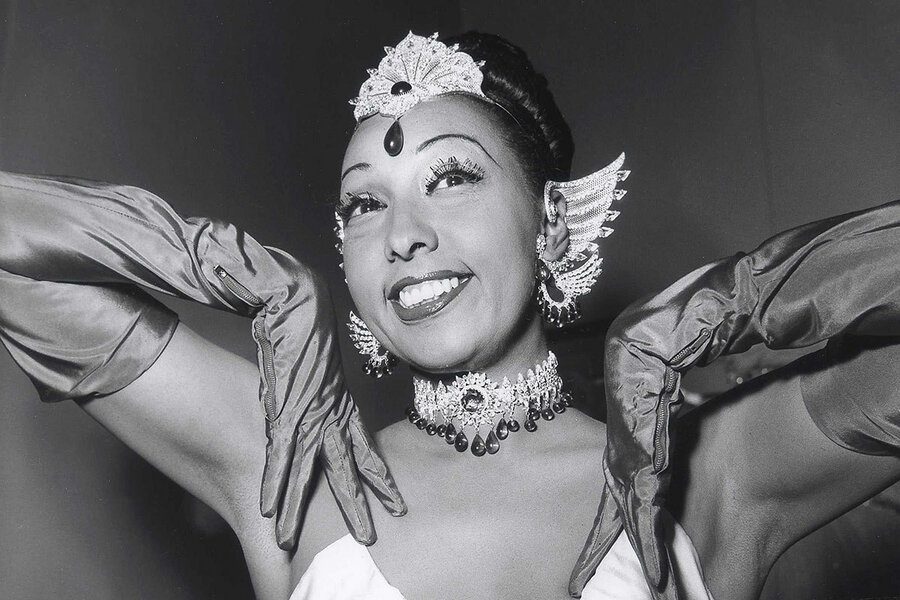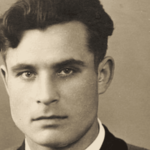Josephine Baker was an American-born French Performer. She was the first black woman to star in a major motion picture and one of the celebrated performers to headline the revues of the Folies Bergère in Paris. Aside from her successful career as an entertainer, she also served as a spy aiding the French Resistance during World War II. After the war, Baker became one of the notable figures of the the civil rights movement in the United States. In 2021 she was inducted into the Panthéon in Paris, the first black woman to receive one of the highest honors in France.
Biography
Josephine Baker was born on June 3, 1906 as Freda Josephine McDonald in Missouri, United States. Growing up in a mixed low-income neighborhood od St. Loius, She was always poorly dressed and hungry as a child. At the age of 8, Baker began working as a live-in domestic for white families in St. Louis. She also witnessed the East St. Louis massacre, a racial co-ordinated attack that saw the death of over 150 African Americans.
By age 12, Baker had dropped out of school and began working as a waitress at the Old Chauffeur’s Club. She also lived as a street child in the slums of St. Louis, sleeping in cardboard shelters, scavenging for food in garbage cans, and making a living with street-corner dancing. It was at the Old Chauffeur’s Club where she met Willie Wells,her first husband whom she married at the age of 13, they however got divorced after a year.
After her divorce Baker found work with a street performance group called the Jones Family Band. She got married again n 1921 at the age of 15, to William Howard Baker, She left him when her vaudeville troupe was booked into a New York City venue;it was during this time she began to see significant career success as an entertainer, and she continued to use his last name professionally for the rest of her life.
Entertainment Career
Josephine Baker sailed to Paris in 1925, opening in la Revue nègre at Théâtre des Champs-Élysées. She became an instant success for her erotic dancing, and for appearing practically nude onstage. Her performance in the revue Un vent de folie in 1927 caused a sensation in the city. After a successful tour of Europe, she broke her contract and returned to France in 1926 to star at the Folies Bergère.
Baker performed the “Danse Sauvage” wearing a costume consisting of a skirt made of a string of artificial bananas and a beaded necklace. This costume became an iconic image and a symbol both of the Jazz Age and the Roaring Twenties. In later shows in Paris, she was often accompanied on stage by her pet cheetah.
Baker also Baker starred in numerous films which found success only in Europe: the silent film Siren of the Tropics (1927), Zouzou (1934) and Princesse Tam Tam (1935). She released numerous songs most notably, “J’ai deux amours” in 1931.
After a while, Baker was the most successful American entertainer working in France. Ernest Hemingway called her “the most sensational woman anyone ever saw”. Picasso drew paintings depicting her alluring beauty. Jean Cocteau became friendly with her and helped vault her to international stardom.
Despite her popularity in France, Baker never attained the equivalent reputation in America. Her attempt to improve her popularity in the via a broadway performance in 1936, resulted to a commercial failure. Baker returned to Paris in 1937, married the French industrialist Jean Lion, renounced her U.S. citizenship and became a French citizen.
Read More:
- J. Robert Oppenheimer: The Father of the Atomic Bomb
- Shoichi Yokoi: The Last Soldier of the Imperial Japanese Army
- Reinhard Heydrich, Hitler’s Most Evil General
World War II Service
In September 1939, when France declared war on Germany in response to the invasion of Poland, Baker was recruited by the Deuxième Bureau, the French military intelligence agency, as an “honorable correspondent”. Baker worked with Jacques Abtey, the head of French counterintelligence in Paris.
She socialised with the Germans at embassies, ministries, night clubs, charming them while secretly gathering information. Her café-society fame enabled her to rub shoulders with those in the know, from high-ranking Japanese officials to Italian and Vichy bureaucrats, reporting to Abtey what she heard. She attended parties and gathered information at the Italian embassy without raising suspicion.
When the Germans invaded France, Baker left Paris and went to the Château des Milandes, her home in the Dordogne département in the south of France. She housed people who were eager to help the Free French effort led by Charles de Gaulle . As an entertainer, Baker had an excuse for moving around Europe. She obtained and carried information written in invisible ink on her sheet music to England.
Later in 1941, she and her entourage went to the French colonies in North Africa to continue helping the Resistance. After the war, Baker was awarded the Resistance Medal by the French Committee of National Liberation, the Croix de Guerre by the French military, and was named a Chevalier of the Légion d’honneur by General Charles de Gaulle.
Civil rights activism
Although based in France, Josephine Baker supported the Civil Rights Movement during the 1950s. During one of her visit to the United states, she wrote articles about the segregation in the States and gave a talk at Fisk University, Tennessee, on “France, North Africa and the Equality of the Races in France”.
She refused to perform for segregated audiences in the United States, although she was offered $10,000 by a Miami club; the club eventually met her demands. Her insistence on mixed audiences helped to integrate live entertainment shows in Las Vegas, Nevada. After this incident, she began receiving threatening phone calls from people claiming to be from the Ku Klux Klan but said publicly that she was not afraid of them.
Baker also worked with the NAACP. Her reputation as a crusader grew to such an extent that the NAACP had Sunday, May 20, 1951, declared “Josephine Baker Day”. She was presented with life membership with the NAACP by Nobel Peace Prize winner Ralph Bunche. In 1963, she spoke at the March on Washington at the side of Rev. Martin Luther King Jr. She was the only official female speaker at the event.
Following the assassination of Martin Luther King Jr.’s in 1968, Coretta Scott King offered Baker unofficial leadership of the movement in the United States. Baker however declined the offer out of concern for the welfare of her children.
Later Years and Death
Josephine Baker was back on stage at the Olympia in Paris in 1968. She also performed at the Carnegie Hall in 1973, the Royal Variety Performance at the London Palladium and the Gala du Cirque in Paris in 1974. On April 8, 1975, Baker starred in a retrospective revue at the Bobino in Paris, Joséphine à Bobino 1975, celebrating her 50 years in show business.
Four days later, Baker was found lying peacefully in her bed surrounded by newspapers with glowing reviews of her performance. She was in a coma after suffering a cerebral hemorrhage. She was taken to Pitié-Salpêtrière Hospital, where she died, aged 68, Baker received a full Catholic funeral at L’Église de la Madeleine, attracting more than 20,000 mourners.The only American-born woman to receive full French military honors at her funeral, Baker’s funeral was the occasion of a huge procession. After a family service at Saint-Charles Church in Monte Carlo, Baker was interred at Monaco’s Cimetière de Monaco.
In 2021, she was inducted into the Panthéon in Paris, becoming the first black woman to receive one of the highest honors in France. She was also the sixth woman at the mausoleum alongside Simone Veil, Geneviève de Gaulle-Anthonioz, Marie Curie, Germaine Tillion, and Sophie Berthelot. As her resting place remains in Monaco Cemetery, a cenotaph was installed in vault 13 of the crypt in the Panthéon.





